I remember the first time I went looking for morels. Armed with a cheap field guide and a disproportionate amount of confidence, I spent hours scanning the forest floor. Every fallen leaf looked like a mushroom cap. I came home empty-handed but buzzing with a new kind of awareness. The forest wasn't just a collection of trees anymore; it was a library of secrets. A few weeks later, after more research and a trip with a seasoned forager, I found my first one. Tucked beside a dying elm, its honeycombed head was unmistakable. That feeling—a mix of treasure hunting, scientific discovery, and connecting with nature—is what this beginner's foraging for mushrooms guide is all about. It’s a journey that starts not with a perfect harvest, but with the first step into the woods, armed with curiosity and, most importantly, caution.
Contents
- 1 The Golden Rules: A Safety-First Foraging for Mushrooms Guide
- 2 Gearing Up: Your Essential Toolkit for this Foraging for Mushrooms Guide
- 3 The "Foolproof Five": Your Beginner's Foraging for Mushrooms Guide to Edibles
- 4 After the Hunt: A Processing and Preservation Foraging for Mushrooms Guide
- 5 Frequently Asked Questions for this Foraging for Mushrooms Guide
- 6 Conclusion: Your Lifelong Foraging for Mushrooms Guide Begins Now
- 7 References
The Golden Rules: A Safety-First Foraging for Mushrooms Guide
Before we even think about edible species, we must build a foundation of safety. This isn't just a casual suggestion; it's the core principle of mycology. The analysis here is simple: the rewards of finding a delicious wild mushroom are wonderful, but they are infinitely outweighed by the risk of misidentification. Therefore, a successful forager is not defined by how many mushrooms they find, but by how safely they practice the craft. This section of our foraging for mushrooms guide establishes the non-negotiable mindset you must adopt.
Rule #1: When in Absolute Doubt, Throw it Out
This is the cardinal rule of mushroom hunting, repeated by every expert for a reason. It's not "when in 50% doubt," it's "when in absolute doubt." If you have even a sliver of uncertainty—a 1% hesitation—the mushroom is not safe to eat. Your goal is not to try and convince yourself a mushroom is edible; your goal is to try and prove it's not. This adversarial approach to identification keeps you safe. There are old mushroom hunters, and there are bold mushroom hunters, but there are no old, bold mushroom hunters.
Rule #2: Understand Your Local Ecosystem and Regulations
Mushrooms don't grow in a vacuum. They are part of a complex ecosystem, and they grow in specific places for specific reasons. Start by learning the dominant trees in your area (oaks, pines, aspens, etc.), as many mushrooms form symbiotic (mycorrhizal) relationships with them. Furthermore, foraging isn't a free-for-all. Check the regulations for your local, state, or national parks. Some areas may require permits, have quantity limits, or prohibit foraging altogether to protect the environment. Respecting private property is also paramount. Always get permission before venturing onto someone else's land.
Rule #3: Identify Key Characteristics, Not Just One
A beginner's mistake is latching onto a single feature, like color. Many mushrooms, both edible and toxic, can be "little brown mushrooms." A positive identification requires a holistic approach, cross-referencing multiple features:
- Cap (Pileus): What is its shape, color, texture, and size?
- Underside: Does it have gills, pores, or teeth? Are the gills attached to the stem, or are they free?
- Stem (Stipe): Is it solid or hollow? Does it have a ring (annulus) or a cup at the base (volva)? Is it smooth or textured?
- Spore Print: Taking a spore print (placing the cap on paper to see the color of the spores) is a critical identification step, especially for distinguishing deadly lookalikes.
- Habitat: Is it growing on wood, on the ground, or in a field? What trees are nearby?
Only when all these characteristics align with your field guide's description can you begin to feel confident.
Rule #4: Use the Right Tools for Sustainable Foraging
Sustainable foraging ensures that mushroom populations remain healthy for years to come. The most important tool for this is a mesh bag or a wicker basket. Plastic bags prevent the mushroom from breathing and, more importantly, they stop its spores from being dispersed throughout the forest as you walk. By using a mesh bag, you are actively helping to seed the next generation of fungi. Use a knife to cleanly slice the mushroom at its base, leaving the underground portion (the mycelium, which is the main body of the organism) intact and undisturbed.
Gearing Up: Your Essential Toolkit for this Foraging for Mushrooms Guide
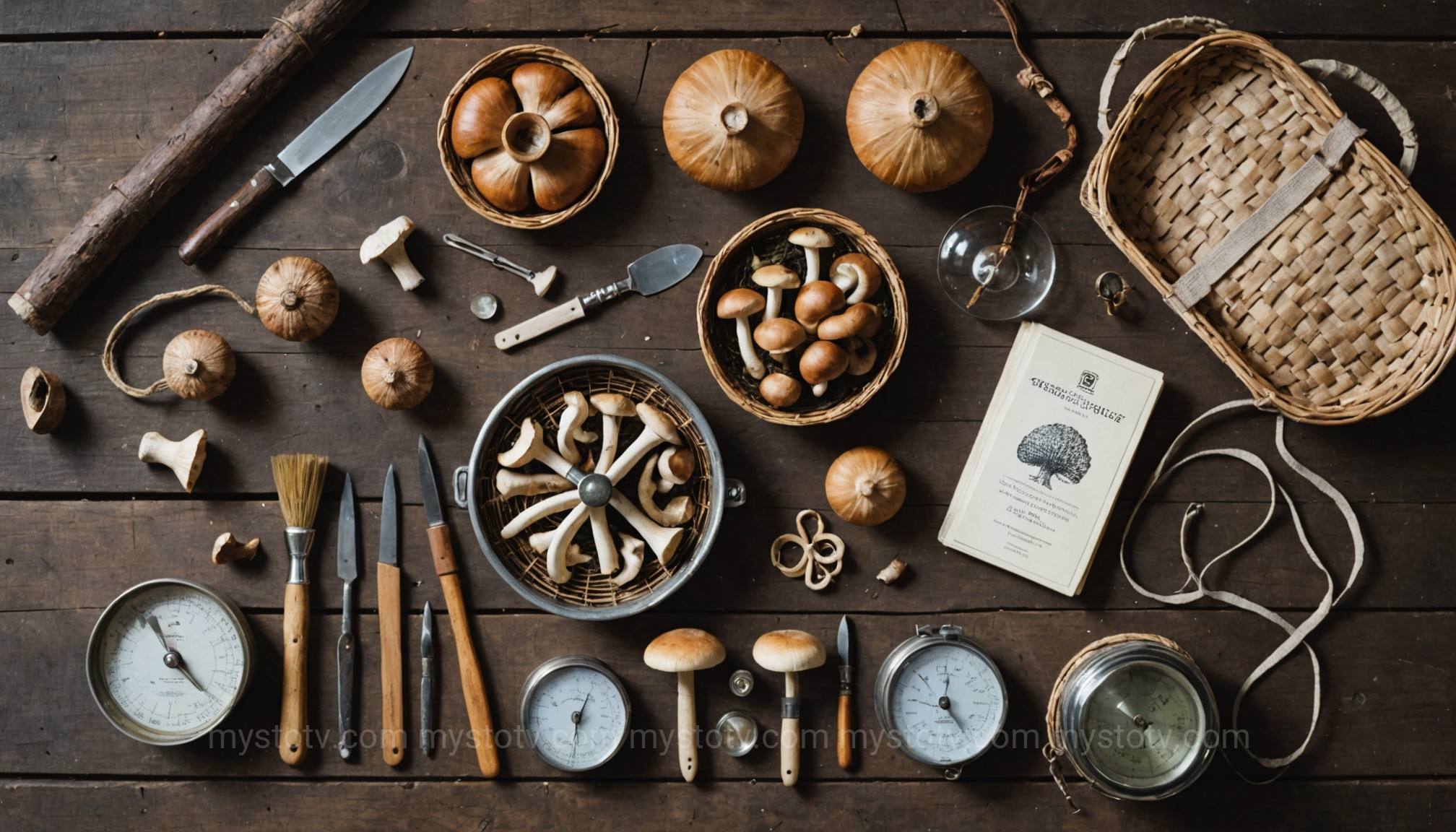
The analysis of a forager's toolkit reveals a focus on three things: efficiency, safety, and ecological responsibility. The right gear isn't about expensive brands or looking the part; it's about having functional items that protect you, the mushrooms, and the forest itself. Each item in this essential foraging for mushrooms guide kit serves a purpose beyond simple collection.
The Forager's Basket or Bag
As mentioned, a wicker basket or mesh bag is non-negotiable for sustainability. It also has a practical benefit: it allows air to circulate, preventing your delicate finds from turning into a slimy mess, which can happen quickly in a plastic bag. A sturdy basket also protects mushrooms from being crushed as you continue your hunt.
A Reliable Knife and Brush
Many specialized mushroom knives come with a curved blade for easily cutting mushrooms from tough-to-reach spots and a brush on the opposite end. Brushing dirt and debris off the mushroom in the field means less cleanup work at home. This simple act keeps soil and grit out of your basket and off your other, cleaner finds.
Field Guide & Identification Apps
A physical, region-specific field guide is your most trustworthy companion. Books like the National Audubon Society Field Guide to North American Mushrooms or "All That the Rain Promises and More..." by David Arora are classics. Phone apps can be a helpful supplement, but never your primary tool. Their image recognition technology is still imperfect and can make dangerous errors. Use them to narrow down possibilities, then confirm every detail with your physical guide. Review the golden rules of safety before relying on any single source.
It's surprisingly easy to get disoriented when your eyes are glued to the forest floor. A compass and the knowledge of how to use it are invaluable. At a minimum, have a fully charged phone with a reliable GPS app or map downloaded for offline use. Your foraging adventure shouldn't turn into an unintended survival situation.
The "Foolproof Five": Your Beginner's Foraging for Mushrooms Guide to Edibles
The term "foolproof" in mycology must be taken with a grain of salt. However, the five mushrooms in this section are chosen for a specific reason: their key identifying features are so distinct, and their dangerous lookalikes are so easily differentiated, that they represent the safest starting point for a novice. The analysis here is about risk mitigation. We are selecting species where the margin for catastrophic error is widest. This part of the foraging for mushrooms guide is your springboard into practical identification.
1. The Morel (Morchella spp.)
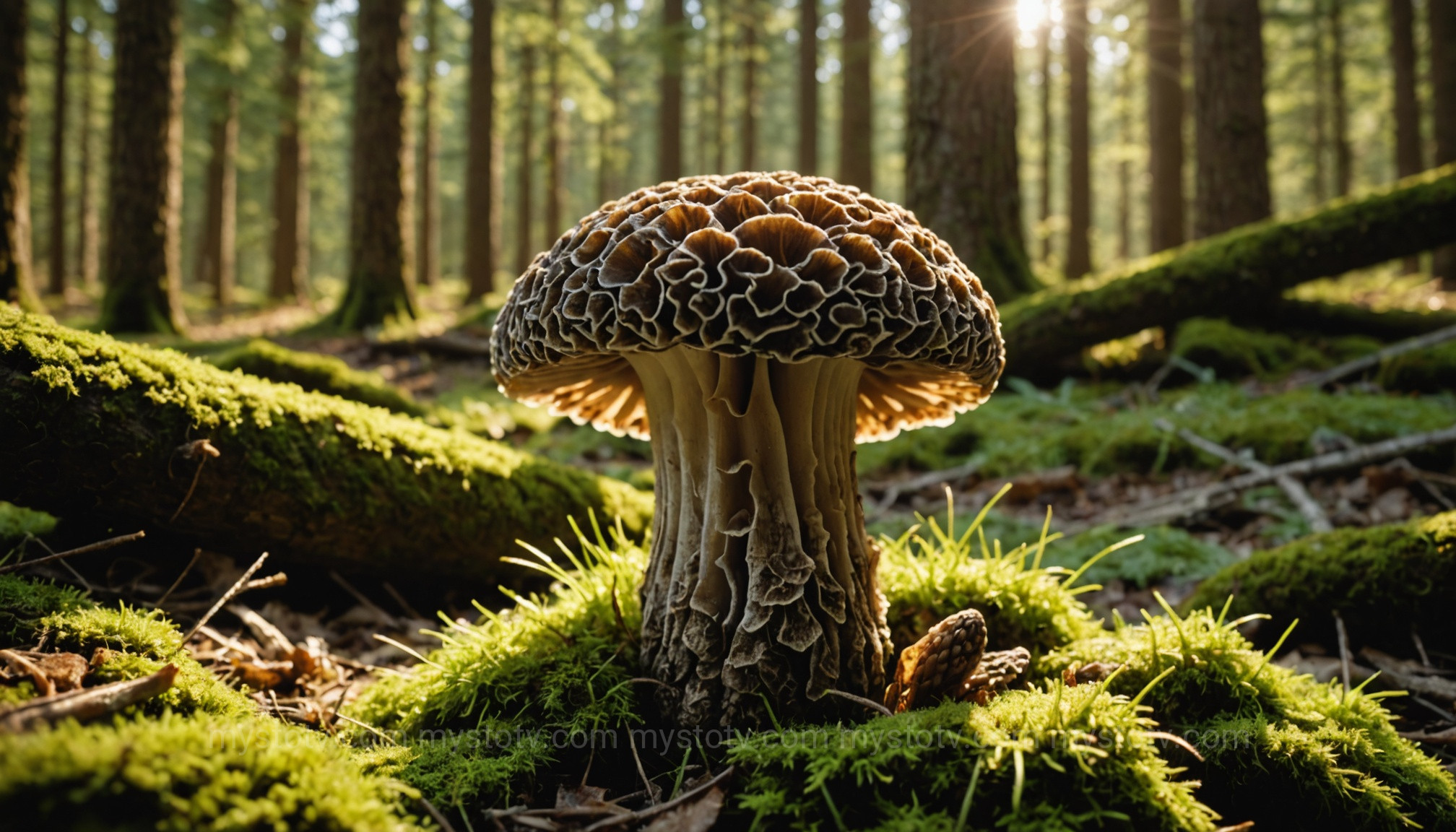
Identification: Morels are the rockstars of the spring foraging season. Their cap is not smooth but deeply pitted and ridged, resembling a honeycomb or a natural sponge. Colors can range from greyish-blonde to deep brown. The single most important feature is this: a true morel is completely hollow inside, from the tip of the cap straight down through the stem. There are no chambers, fibers, or any "stuffing" inside.
Habitat: Look for them in the spring after the soil warms up. They favor disturbed ground, burn sites from the previous year, and areas around dying elm, ash, and old apple trees.
The Dangerous Lookalike: The False Morel (Gyromitra spp.) contains a toxin that can be deadly. It grows in similar areas at the same time. However, the difference is obvious when you slice it open. A False Morel is not hollow. Its interior is filled with cottony fibers or is convoluted and chambered, like a brain. If it's not hollow, it's not a morel. End of story.
2. Chanterelle (Cantharellus spp.)
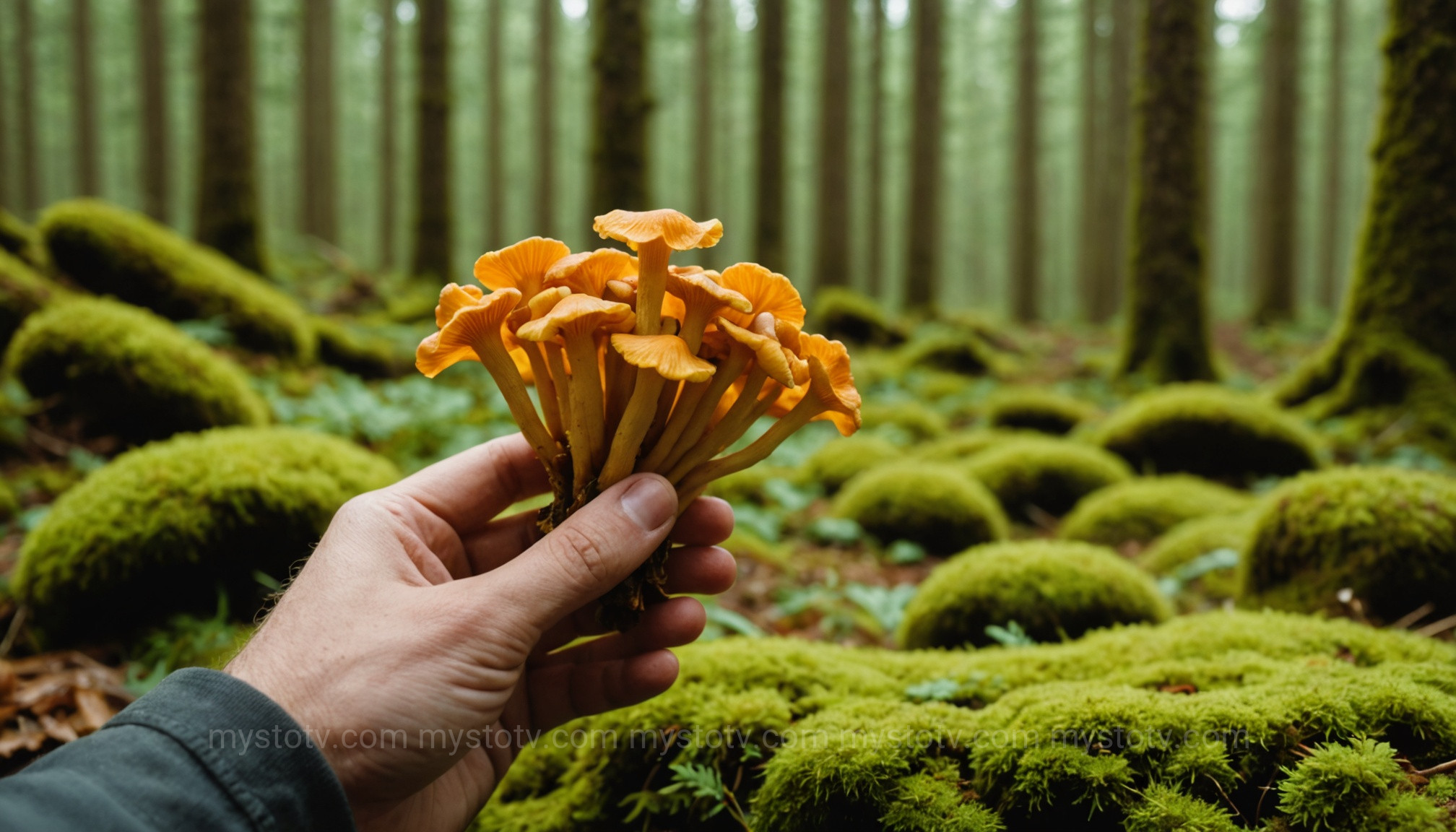
Identification: Chanterelles are a summer treat, famous for their beautiful egg-yolk or apricot-orange color. Their key identifier is on the underside. They do not have true, blade-like gills. Instead, they have "false gills" or ridges. These are blunt, forked, and run seamlessly down the stem, looking more like melted, wavy veins than the sharp, distinct gills of a typical mushroom. Many also have a faint, fruity scent, often compared to apricots. The flesh is solid and white when cut.
Habitat: They grow on the ground (never directly on wood) in hardwood forests, often associated with oaks and beeches. Look for them in mossy, damp areas after a good summer rain.
The Dangerous Lookalike: The Jack-O'-Lantern mushroom (Omphalotus illudens) is the primary concern. It is also bright orange but has two key differences. First, it has true, sharp, non-forking gills (like a store-bought mushroom). Second, it grows in large, dense clusters directly on wood (stumps, logs, or buried roots), while chanterelles grow scattered on the forest floor. Jack-O'-Lanterns are also famously bioluminescent, though you'd need to be in total darkness to see the faint glow.
3. Chicken of the Woods (Laetiporus spp.)
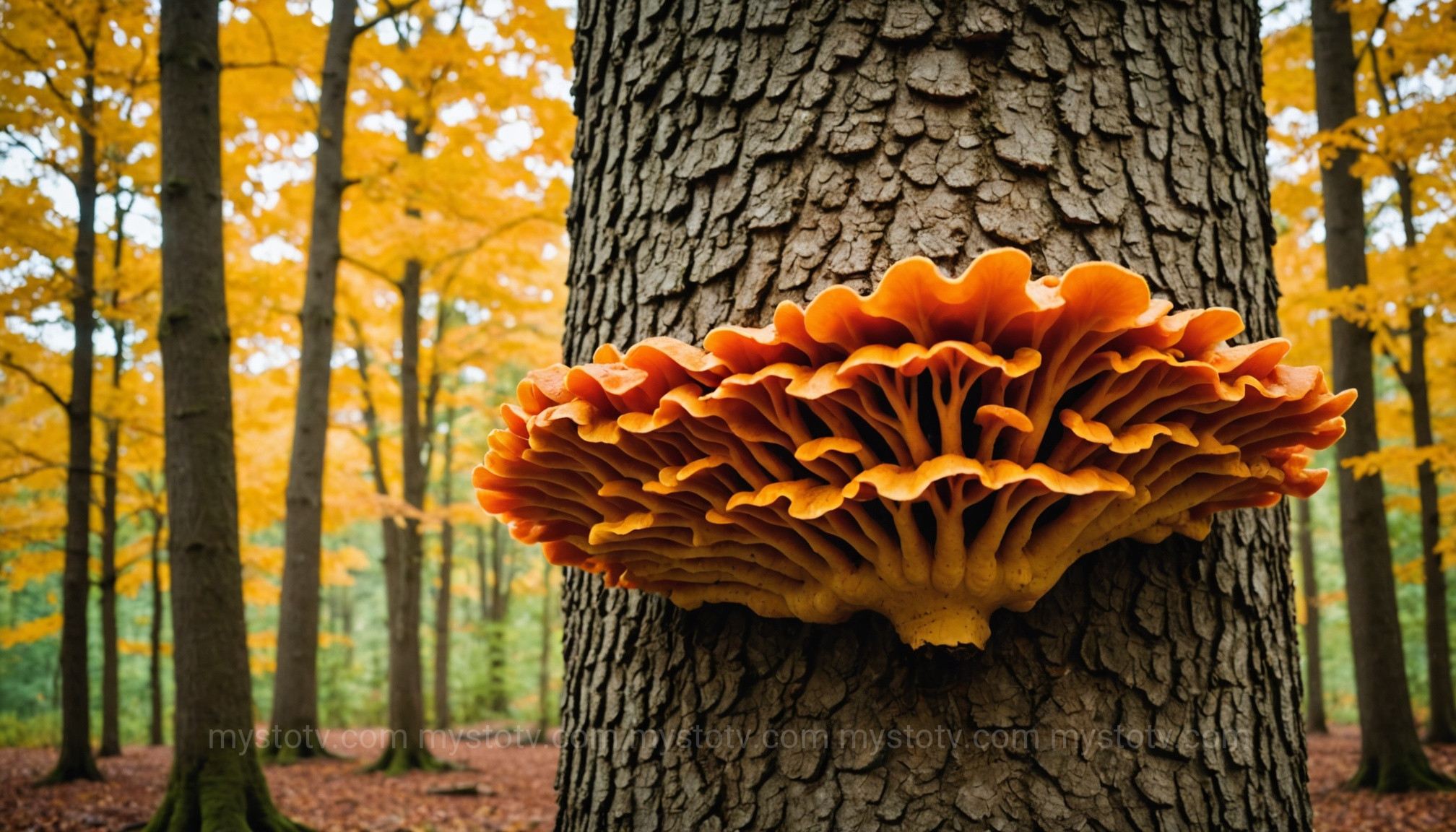
Identification: This mushroom is impossible to miss. It grows in large, overlapping shelves or brackets with wavy edges. The top surface is a brilliant orange to yellow-orange, and the underside is a lemon-yellow surface covered in tiny pores (no gills at all). When young, the texture is tender and succulent, often compared to chicken meat.
Habitat: It is a polypore, meaning it grows on wood, typically on large, dead or dying hardwood trees, especially oak. Finding a large oak log is a good place to start looking.
The Lookalikes (and a Caution): There are few dangerous lookalikes. The main caution is to only harvest Chicken of the Woods growing on hardwood trees. Species that grow on conifers (like hemlock or yew) can cause significant gastrointestinal distress in some people. Also, as it ages, it can be confused with other woody bracket fungi like the Velvet Top Fungus (Phaeolus schweinitzii), but that one has a brownish, velvety top surface, not the bright, clean orange of a prime Laetiporus.
4. Giant Puffball (Calvatia gigantea)
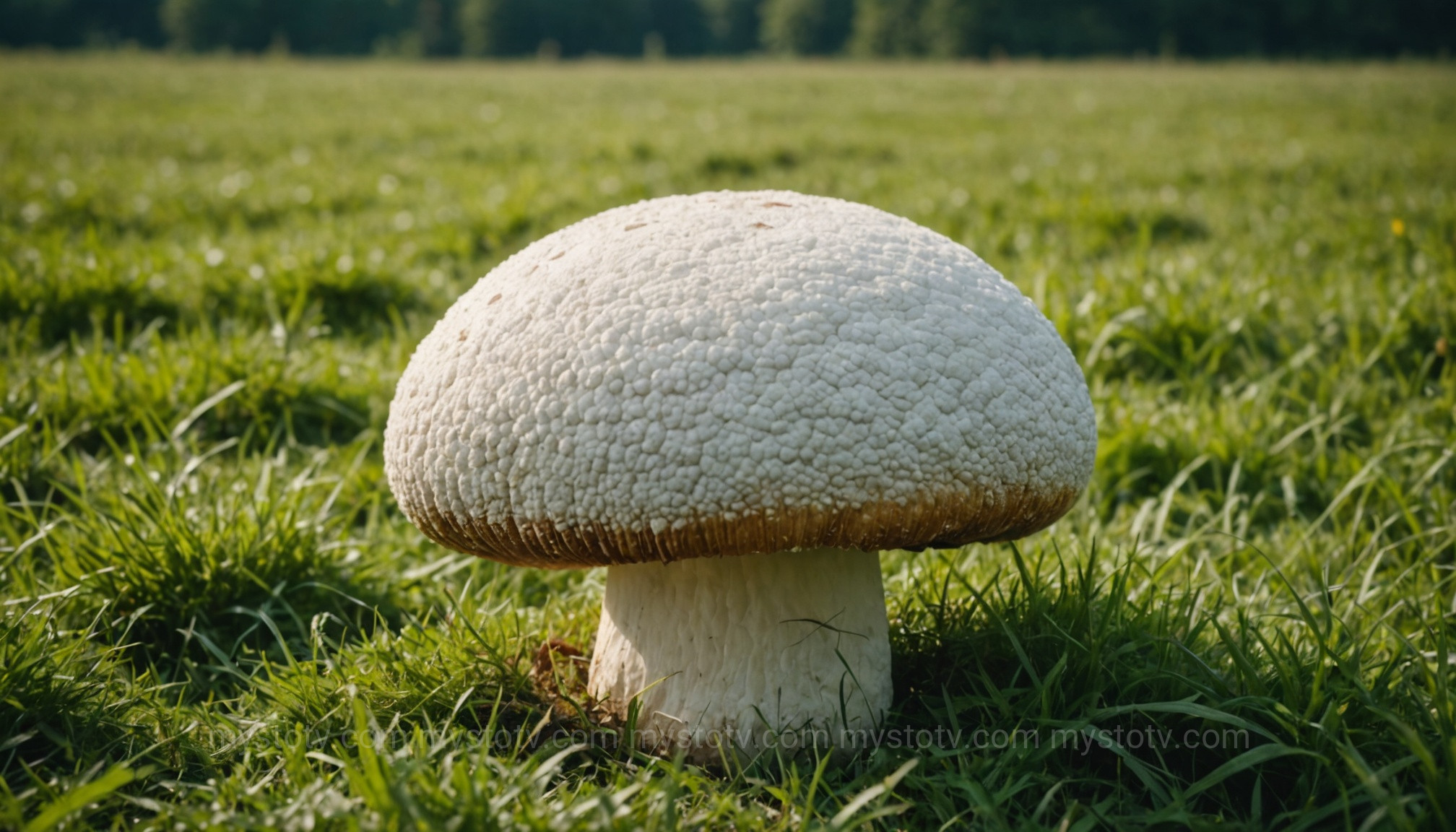
Identification: Just as the name implies, these are large, white, round mushrooms that look like volleyballs or soccer balls sitting in a field. They have no discernible stem or gills. The most critical identification test is slicing it from top to bottom. A true, edible puffball must be perfectly solid and pure white inside, with a texture like firm tofu or marshmallow.
Habitat: You'll find them in open areas like grassy fields, meadows, and lawns, often after rain in late summer and fall.
The Dangerous Lookalike: This is arguably the most important lookalike to learn in all of foraging. The button stage or "egg" of a deadly Amanita mushroom (like the Destroying Angel) can look like a small puffball from the outside. However, when you slice it in half, the difference is life-saving. The inside of the Amanita egg will reveal the silhouette of a tiny, developing mushroom—you'll see the faint outlines of a cap, gills, and stem. If you see anything other than pure, homogenous white flesh, discard it immediately.
5. Shaggy Mane / Lawyer's Wig (Coprinus comatus)
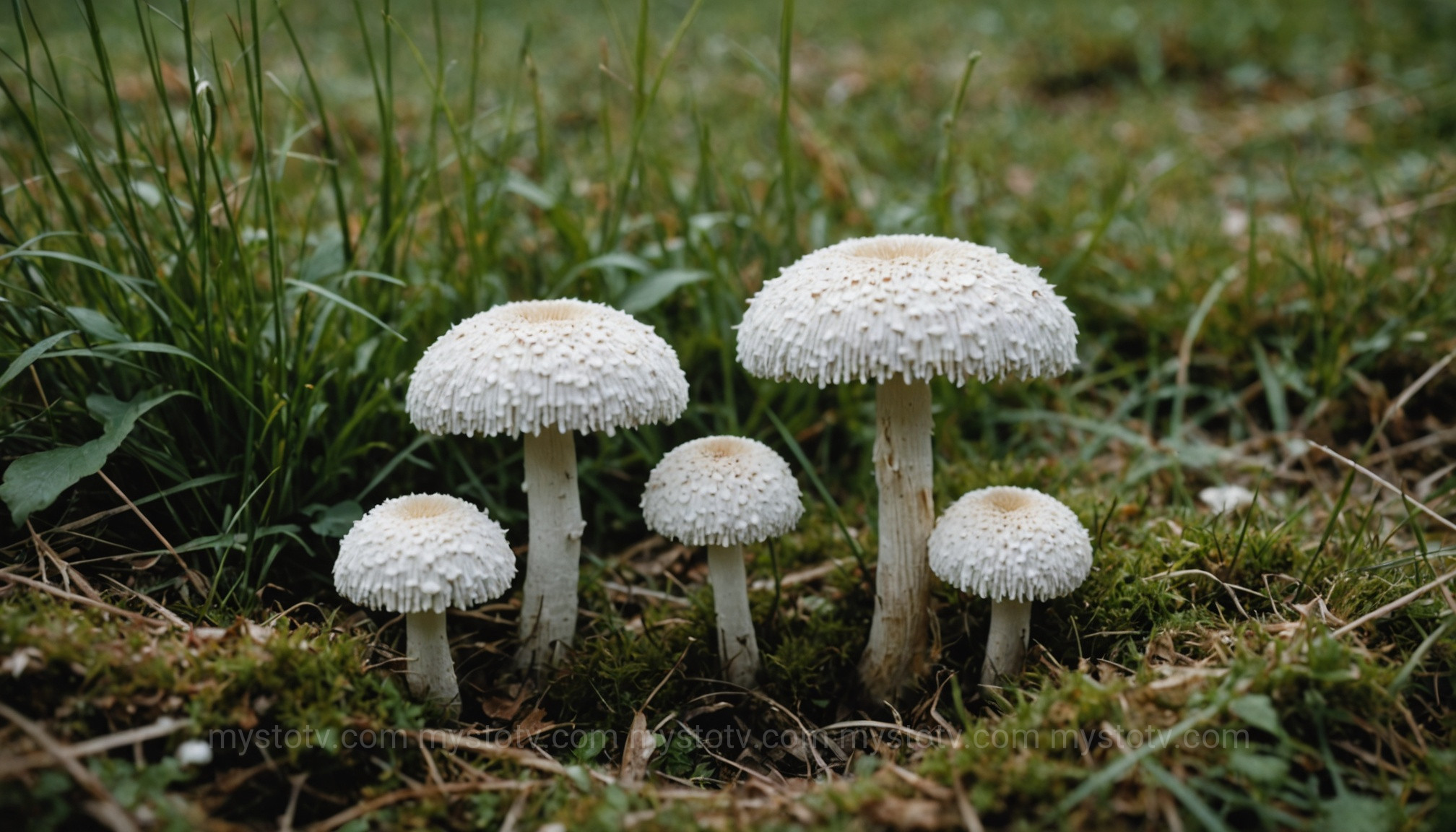
Identification: Shaggy Manes are distinctive. They are tall and cylindrical or bell-shaped when young, covered in white to brownish "shaggy" scales, giving them the appearance of an old-fashioned lawyer's wig. Their most unique feature is how they age. Within hours of being picked or reaching maturity, they begin to self-digest into a black, inky goo from the bottom up (a process called deliquescence). You must harvest them when they are young and pure white.
Habitat: They love disturbed ground. Look for them on lawns, in gravel, along path edges, and in hard-packed soil from late summer through fall.
The Lookalike (and a Chemical Caution): Their closest common relative is the Common Ink Cap (Coprinopsis atramentaria). While it also turns to ink, its cap is smoother and more greyish-brown, lacking the prominent shaggy scales. The critical warning: the Common Ink Cap contains a chemical called coprine, which causes a severe and unpleasant reaction (flushing, nausea, heart palpitations) when consumed with alcohol, even up to a few days apart. While the Shaggy Mane does not contain coprine in significant amounts, due to the potential for confusion, it is a wise rule for beginners to avoid consuming alcohol with any ink cap species.
After the Hunt: A Processing and Preservation Foraging for Mushrooms Guide
The analysis for this final stage is about respecting the ingredient. Your foraging journey doesn't end when you leave the woods; it ends with a safe, delicious meal and well-preserved surplus. To fail at this stage is to waste the resource you so carefully collected. This section of the foraging for mushrooms guide ensures your efforts are rewarded at the dinner table.
Cleaning and Inspection
Once home, lay out your haul on a clean surface. This is your second, more thorough, identification check. Go through each mushroom one by one and confirm its identity. For cleaning, a dry brush or a damp paper towel is preferred over soaking them in water, which can make them logged and mushy. Trim away any bad spots or insect-damaged parts.
The Golden Rule of Cooking
Always cook wild mushrooms thoroughly. Never eat them raw. Wild mushrooms contain compounds like chitin that make them indigestible unless broken down by heat. More importantly, cooking can neutralize certain toxins present in some edible species (like Morels). Sautéing, roasting, or simmering for at least 15-20 minutes is a good rule of thumb.
Preservation Methods
If you're lucky enough to have a large haul, preservation is key.
- Dehydrating: This is the best method for many mushrooms like morels, porcini, and chanterelles. It concentrates their flavor. A food dehydrator is ideal, but an oven on its lowest setting with the door ajar can also work.
- Sauté and Freeze: This works wonderfully for more delicate mushrooms. Sauté the cleaned mushrooms in a little butter or oil until they have released their liquid and cooked through. Cool them, then freeze them in portion-sized bags for future use in soups, sauces, and sautés.
Frequently Asked Questions for this Foraging for Mushrooms Guide
Here are a few common, practical questions that arise on the foraging journey.
1. Can I rely solely on a smartphone app for mushroom identification?
No. Absolutely not. Apps are a fantastic tool for narrowing down possibilities or for learning, but they can and do make mistakes. An error by an app could have fatal consequences. Always use an app as a secondary tool to be confirmed with a physical, reputable field guide and a thorough examination of all the mushroom's characteristics.
2. What is a spore print and is it necessary for beginners?
A spore print is the color of a mushroom's spores, viewed by placing the cap gill-side-down on paper for a few hours. For some groups of mushrooms, it's an essential identification feature. For the five beginner mushrooms in this guide, their other features are so distinct that a spore print is less critical. However, learning to take one is a fundamental mycology skill that you should practice as it will be essential if you advance to more difficult species like those in the Agaricus genus (relatives of the button mushroom).
3. I found a mushroom and I'm 99% sure it's edible. Is 99% good enough?
No. In mushroom foraging, 99% is the same as 0%. The only acceptable level of certainty for consumption is 100%. If there is any feature—the smell, the texture, the gill attachment, the habitat—that makes you hesitate, you must discard the mushroom. This is the single most important safety rule.
4. How much of a new mushroom should I eat the first time?
Even with a 100% positive ID, some individuals can have an allergic reaction or sensitivity to a specific wild mushroom. When trying a new-to-you edible species for the first time, eat only a small, well-cooked portion. Then, wait 24 hours to see how your body reacts before consuming it in a larger quantity.
Conclusion: Your Lifelong Foraging for Mushrooms Guide Begins Now
Embarking on the path of mushroom foraging is about so much more than just finding free food. It's a deep dive into ecology, a lesson in patience, and a practice of mindfulness. This foraging for mushrooms guide is designed to be your first step, built on a foundation of respect for nature and an unwavering commitment to safety. By starting with these five relatively easy-to-identify species, you build the confidence and, more importantly, the identification habits that will serve you for a lifetime. The forest is full of wonders waiting to be discovered. Go slowly, be certain, and savor the profound connection that comes from safely and sustainably harvesting your own food from the wild. Your adventure is just beginning.
References
- Arora, David. Mushrooms Demystified: A Comprehensive Guide to the Fleshy Fungi. Ten Speed Press, 1986.
- Kuo, Michael. "The Mushroom Expert." MushroomExpert.Com, accessed 2023. https://www.mushroomexpert.com/
- North American Mycological Association (NAMA). "Foraging for Wild Mushrooms."